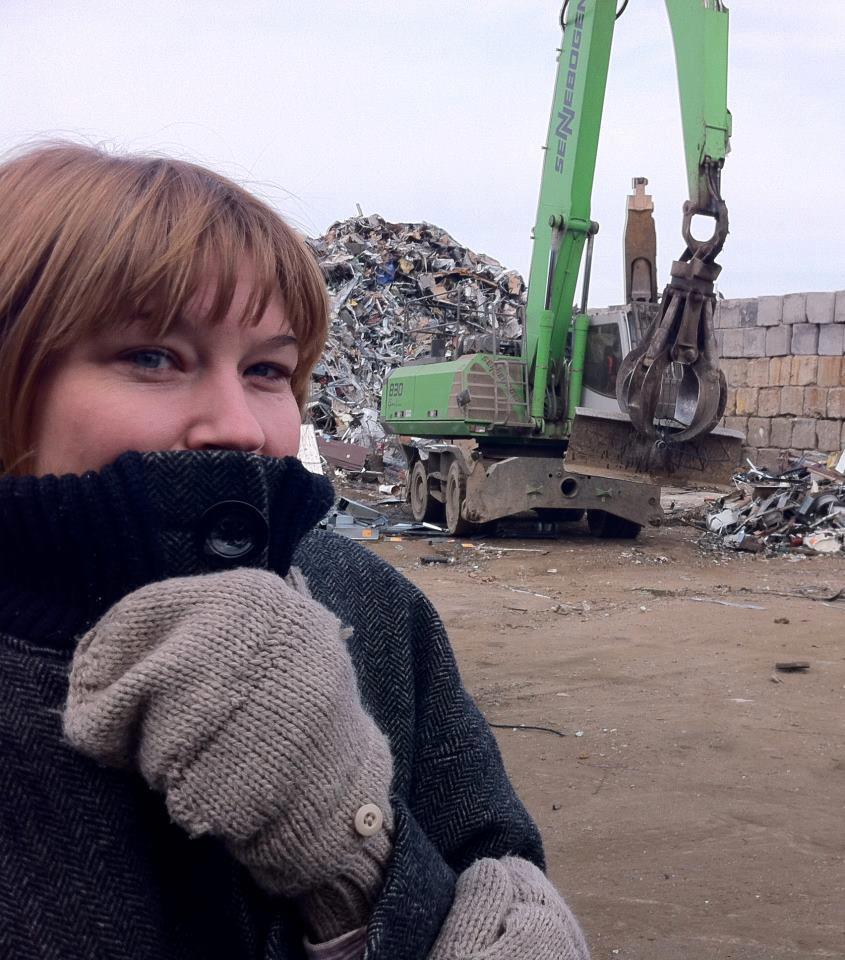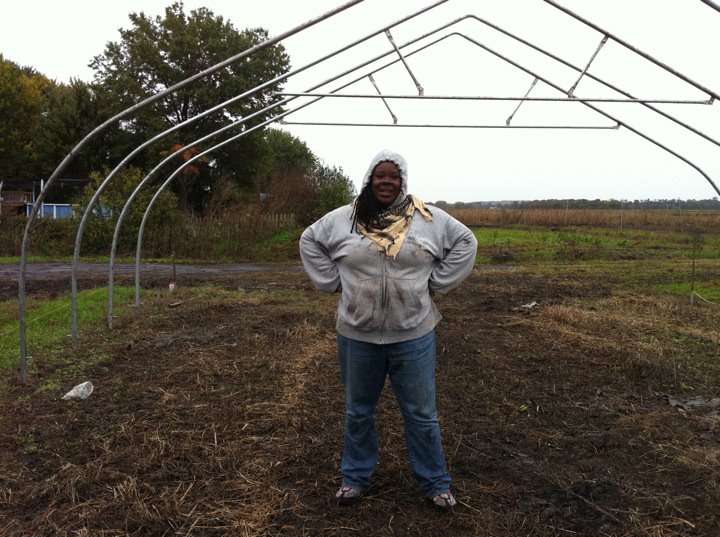Grist is proud to present the Change Gang — profiles of people who are leading change on the ground toward a more sustainable society and a greener planet. Some we’ve written about before; some are new to our pages. Some you’ll have heard of; most you probably won’t. Know someone we should add to the Change Gang? Tell us why.
 In 2012, this is how Brooklyn rolls: On an early spring evening in March, 60-70 people gathered at the Brooklyn Brewery to hear a talk about what to do about sewage overflow into the notoriously polluted Newtown Creek. Urban planner Kate Zidar, the executive director of the Newtown Creek Alliance, recalled the meeting as the “nerdiest event you can imagine.”
In 2012, this is how Brooklyn rolls: On an early spring evening in March, 60-70 people gathered at the Brooklyn Brewery to hear a talk about what to do about sewage overflow into the notoriously polluted Newtown Creek. Urban planner Kate Zidar, the executive director of the Newtown Creek Alliance, recalled the meeting as the “nerdiest event you can imagine.”
“The first speaker went through reams of water quality data,” says Zidar, “and then there was me talking about a really obscure planning process. And it was packed.”
These days, it seems like you can hardly go one subway stop on the F train without slamming into yet another Brooklyn activist determined to turn one of the most metropolitan regions in the world into a clean, green, ecologically sustainable wonderland. Kate Zidar is a perfect example.
A one-time biologist, Zidar had an epiphany in Ecuador a decade ago while studying carabid beetles, a carnivorous rain forest insect.
“The typical conservation biology story is that you seek out these wild spaces and study them with this idea of needing to save them — save the rainforest or save the whales or whatever,” says Zidar. “But I found myself more observant of the fact that in these wild spaces there were humans who were struggling with their basic needs like food, shelter and employment, and how that impacted the ecosystem. And that’s how I got interested in urban planning.”
Zidar moved to New York, got a master’s degree in urban planning from the Pratt Institute, and speedily coined a new term in the title of her master’s thesis: “The Citizen’s Guide to the Sewershed.”
The sewershed is the urban watershed, explains Zidar, who is convinced that not everyone understands that when storm runoff floods into the sewers in New York, it overloads the system and sends raw untreated sewage directly into local waterways — a phenomenon known technically as combined sewer overflows, or CSO.
“There’s a huge gap between the way the sewer system chronically malfunctions and the public’s perception of that problem — and their place in that process,” says Zidar, who believes “users of infrastructure can be conscripted to help that infrastructure function better if they only knew what their connection was.”
Today’s sewer overflow outbursts are hardly the only pollution problems to have pummeled Newtown Creek over the years. The creek, says Zidar, served as an open sewer for the fuel industry dating all the way back to the days of whale oil — the early oilman Charles Pratt (founder of the Pratt Institute) started his first kerosene factory in Brooklyn.
“The bone boilers, the renderers, and the early waste industry were all here,” says Zidar, who notes that the sediment in Newtown Creek still contains pollutants that date back many decades. “So it’s got all this historic stuff going on, plus these kind of ongoing impairments.”
“And now people want to kayak,” she says. “It’s like this land of total juxtaposition, where we have he heaviest industry left in New York City, and then you have the North Brooklyn boat club.”
At the Newtown Creek Alliance, Zidar’s job is to help coordinate how to best spend the flow of federal, state, and city money available to mitigate the pollution problems. One key goal is creating more “green infrastructure”: vegetated areas that help filter pollutants and restore the region’s natural hydrology.
Another goal: Just getting the word out on how the major metropolitan ecosystem works. So far, Zidar seems to be making an impact.
“Whenever I give a talk, I will take a pop quiz at the beginning and ask, ‘If I say CSO, how many people know what I am talking about?’ I was at a talk last night, and almost 80 percent of the people there raised their hand.”
“It was like Revenge of the Nerds.”




